It’s crazy to believe only 1 in 3 websites are using meta tags.
That means only 1 in 3 sites are getting the most from their SEO.
There’s a huge gap in the use of meta descriptions and canonical content tags, too!
BuiltWith.com has meta tag usage broken down by the numbers – it’s shocking…

Yeah, meta tags don’t have much SEO weight as before.
That’s not an excuse to leave them out.
Especially since they improve website usability and can increase clickthrough rate to your website!
Let’s use this post an opportunity to put using meta tags back in action!
Meta Tag Attributes: What They Are and What You Should Know
Do you ever take the time to fill out meta tags when creating content?
Yeah… this stuff:
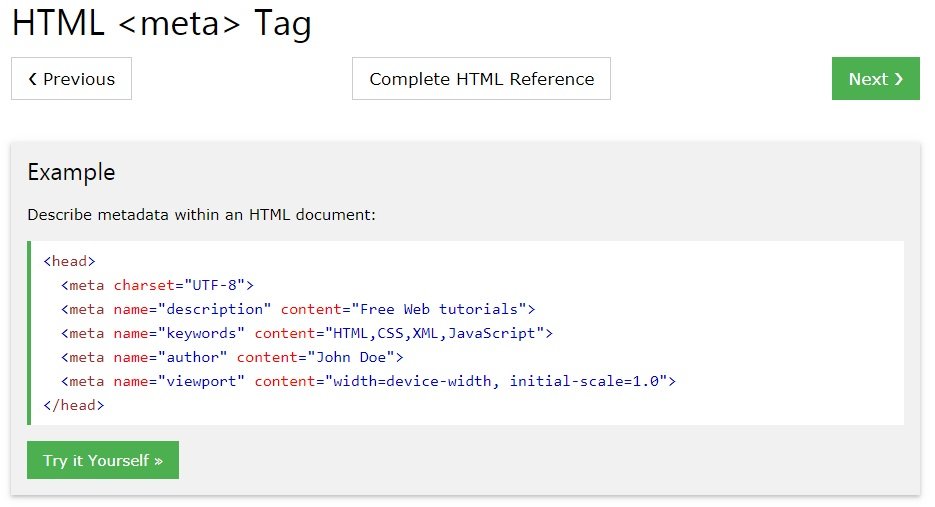
The meta tags are there to help search engines and readers understand the page and its content. Think of them like the index of a book. Google sees the tags and gets an overview.
Here are the meta tags from most to least important:
- Meta Robots
- Title Tag
- Meta Description
- Meta Keywords
… and why they’re ranked this way:
Meta Robots
The meta robots tag is #1 because you’re either telling Google:
- Index this page
- Don’t index this page
Suppose you accidentally chose or coded noindex on the page… well, Google sees it but won’t place it in search engine results. This attribute is usually left for backend pages like logins or accounts. It has a purpose, but you wouldn’t want to apply it to your main content.
There’s also:
- Follow
- Nofollow
The follow attribute tells Google to pass “weight” to the next page while nofollow says “hey, don’t pay attention to the pages I’m linking”. You’d want to ensure your main content has follow attributes while the personal pages (again, login, account, ETC) don’t.
Title Tag
Title tags are important. Really important.
They have the biggest impact on SEO for a couple reasons:
- Keyword usage
- Improves clickthrough
The right title can improve your click through in the range of 20% to 730%. This high click-through rate is a major signal for Google’s RankBrain.
Better RankBrain = better search rankings.
So… make sure every page has a unique, optimized title.
Meta Description
The description comes in at a close second for two reasons:
- Houses keyword(s)
- Gives a user a reason to click
Some like to judge a book by its cover. Others will read the back. The description is a preview of what they can expect. You should always have unique descriptions for each page.
Meta Keywords
Meta keywords fell out of favor when people kept abusing them. Honestly, you probably can avoid these completely. But, it takes a few seconds to include them so why not? Use the main and secondary keywords related to the content in this area.
Meta Tags for SEO: Refining the Meta Keywords Google Loves
Meta tags are easy to neglect because you simply forget since you’re excited to hit publish. Likewise, some webmasters don’t want to touch the code in fear or breaking the site. Or, they don’t know HTML.
Those aren’t good excuses.
It takes you what… a minute or two to include them?
Here’s what you should do…
1. Select the meta keyword based on the content topic
Your keyword selection will mirror what you’ve chosen as the main topic of the content.
For example, we chose ‘Meta Tags’ which if you were to do a CTRL + F to find all instances you’ll notice quite a few peppered throughout the post.
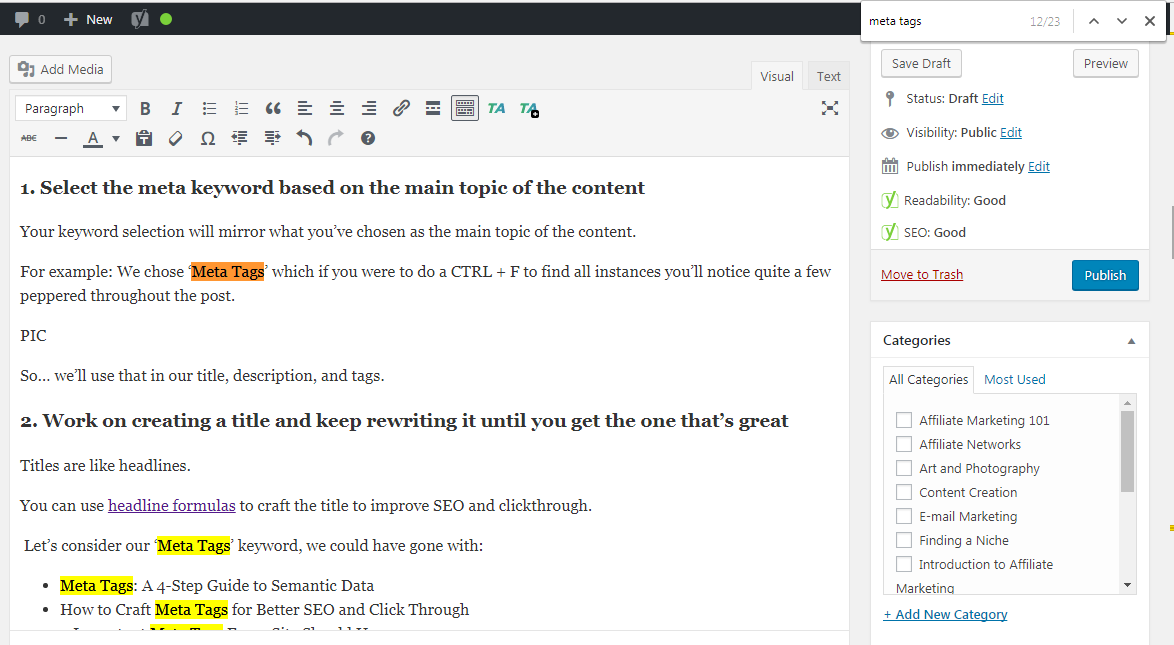
So… we’ll use that in our title, description, and tags.
2. Work on creating a title and keep rewriting it until you get the one that’s great
Titles are like headlines.
You can use headline formulas to craft the title to improve SEO and clickthrough.
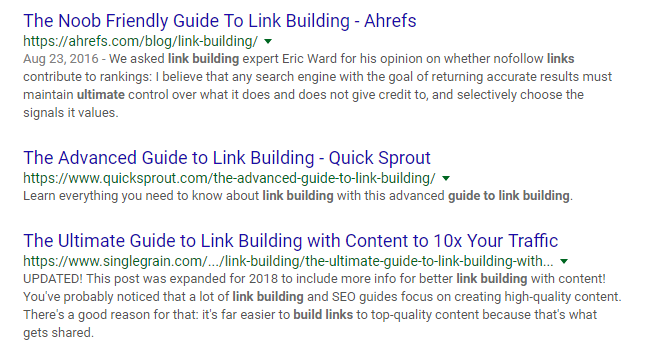
Let’s consider our ‘Meta Tags’ keyword, we could have gone with:
- Meta Tags: A 4-Step Guide to Semantic Data
- How to Craft Meta Tags for Better SEO and Click Through
- 4 Important Meta Tags Every Site Should Use
Write a couple of headline variations.
20 – 30 will do the trick.
Then come back to the one that jumps out. And, if you’re really a stickler for optimization, pass a sample around your network to see which one they think is best.
3. Repeat the process of refining but with the meta description
Here are a few shortcuts for making good descriptions:
- Tell them what they’ll learn
- Use a cliffhanger to draw their attention
- Lead strong with an eye-opening stat
- Give them something rewarding by doing
Writing good, SEO-friendly meta descriptions isn’t hard if you lift the best bits of information from the post. This is the sentence or two that really jumps out. Rework it as the description.

We liked this example because of the ‘over my shoulder’ bit… makes it interesting.
Otherwise, do like you did the title and keep rewriting it (and testing it) until you’ve got the one.
4. Spend the few seconds to add meta keywords (because you’re already there)
- Make a list of the main and secondary keywords
- Include them as the meta keywords
- Keep it to about 3-5 keywords
Don’t overthink it.
SEO Meta the Easy Way: The Yoast Plugin and SEO Meta Tag Generators
There’s an all-around easier way of creating and using meta tags with your pages and posts. This is done using the Yoast SEO plugin. It’s free and comes with the option to modify meta tags.
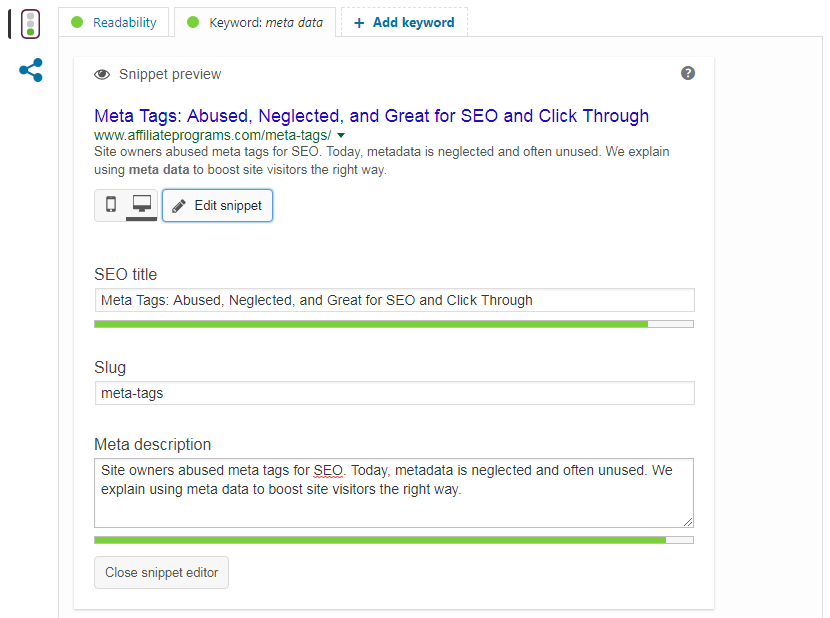
Moz has a good write up on it: Everything You Need to Know About Using Yoast SEO for WordPress
Or…
You can use an SEO meta tag generator like so:
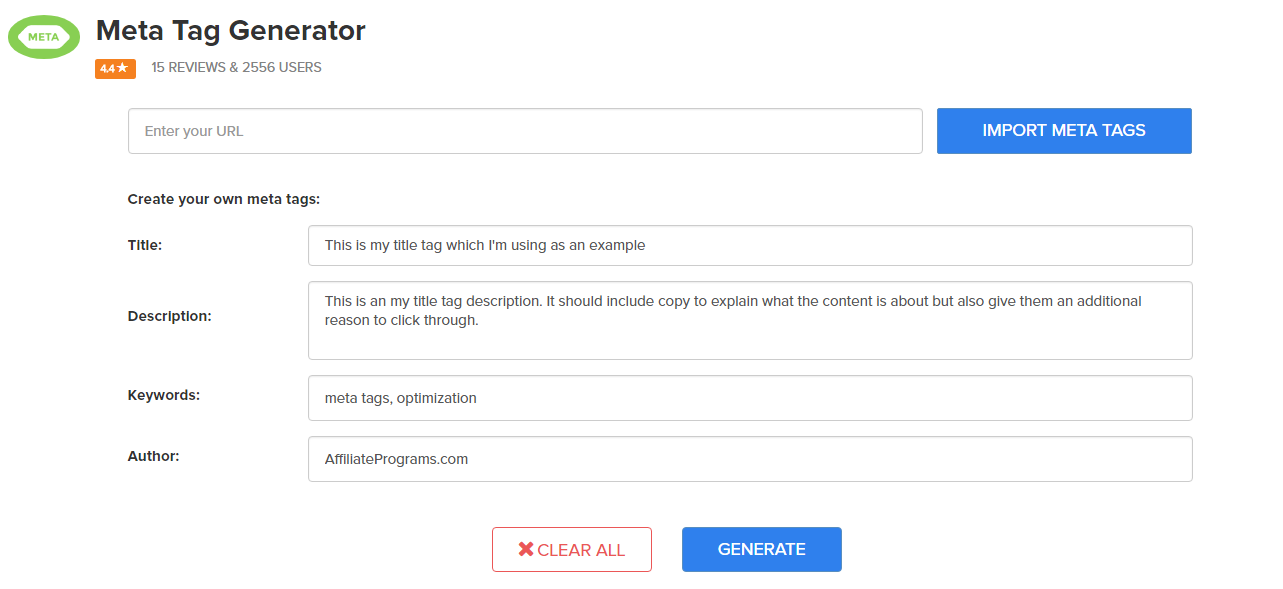
These are great if you’re coding sites and don’t want to be bothered doing them for each page.

You can do this with a simple copy & paste, technically, but it saves a few seconds which adds up if you have thousands of pages to update.
Find the SEO meta tag generators here:
- http://tools.seobook.com/meta-medic/
- https://www.metatags.org/meta_tags_code_generator
- https://lxrmarketplace.com/meta-tag-generator-tool.html
Any of these would work just fine.
Don’t Forget to Update Older Posts, Too
Updating old content can provide quick wins for organic search traffic.
- Refreshed or new info
- Better meta tags
- More media
- Extra keywords
Don’t forget about the meta as you’re working on the old stuff.
That’s About it for Using Meta Tags for SEO and Clickthrough
It’s not too hard a concept, right?
Hopefully, this post has encouraged you to reassess how you approach using meta tags.
There’s a lot of SEO benefit for those that do.
Not only because it’ll help Google and users understand the content but also how a lot of your competition isn’t bothering with it (easy wins).




